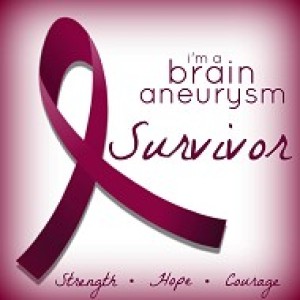Aniversario
Today is the 5th anniversary of the day I didn't die of a subarachnoid haemorrhage. A celebratory trip to the garden centre was called for, where I got a new plant, some bird treat sticks and a Mars icecream. The resident macau spotted his arch-enemy Buster, climbed out of his cage and proceeded to stalk towards him along the floor of the shop. The bird is bigger than the dog, and has a huge wicked beak, so I lifted B out of harm's way and watched the creature inspect my purchases. When however he tried to open my treasured Desigual handbag, I considered that quite unacceptable, and bravely snatched it away. Retreat was hastily beaten, gulping down a melting Mars icecream on the way. And once again I lived to tell the tale, though not so exciting as that 5-years-ago one (which I can't properly remember without my Blip aide-memoire).
Please feel free to skip the next bit - it's just to remind me how lucky I was:
Overall, about 1 percent of all people have one or more cerebral aneurysms. Most of these, however, are small and unlikely to rupture.
The average incidence of subarachnoid hemorrhage is 9.1 per 100,000 annually.
SAH is often associated with a poor outcome. The death rate (mortality) for SAH is between 40 and 50 percent, but trends for survival are improving. Of those that survive hospitalization, more than a quarter have significant restrictions in their lifestyle.
Neurocognitive symptoms, such as fatigue, mood disturbances, and other related symptoms are common results. Even in those who have made good neurological recovery, anxiety, depression, posttraumatic stress disorder, and cognitive impairment are common; 46 percent of people who have had a subarachnoid hemorrhage have cognitive impairment that affects their quality of life. Over 60 percent report frequent headaches.
The classic symptom of subarachnoid hemorrhage is thunderclap headache (a headache described as "like being kicked in the head", or the "worst ever", developing over seconds to minutes). This headache often pulsates towards the occiput (the back of the head). About one-third of people have no symptoms apart from the characteristic headache, and about one in ten people who seek medical care with this symptom are later diagnosed with a subarachnoid hemorrhage.
SAH is a form of stroke and comprises 1–7 percent of all strokes. It is a medical emergency and can lead to death or severe disability—even when recognized and treated at an early stage. Up to half of all cases of SAH are fatal and 10–15 percent of casualties die before reaching a hospital, and those who survive often have neurological or cognitive impairment.


Comments
Sign in or get an account to comment.


